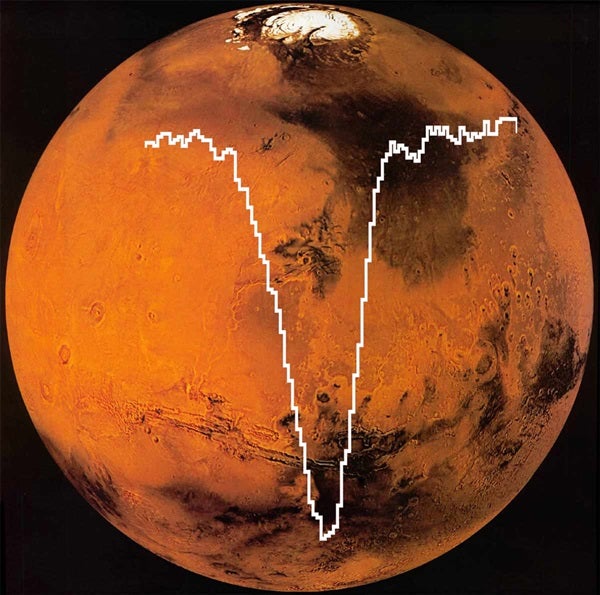Atomic oxygen affects how other gases escape Mars and therefore has a significant impact on the planet’s atmosphere. Scientists detected only about half the amount of oxygen expected, which may be due to variations in the martian atmosphere. Scientists will continue to use SOFIA to study these variations to help better understand the atmosphere of the Red Planet.
“Atomic oxygen in the martian atmosphere is notoriously difficult to measure,” said Pamela Marcum, SOFIA project scientist. “To observe the far-infrared wavelengths needed to detect atomic oxygen, researchers must be above the majority of Earth’s atmosphere and use highly sensitive instruments, in this case a spectrometer. SOFIA provides both capabilities.”
The Viking and Mariner missions of the 1970s made the last measurements of atomic oxygen in the martian atmosphere. These more recent observations were possible thanks to SOFIA’s airborne location, flying between 37,000–45,000 feet (11,000–14,000 meters), above most of the infrared-blocking moisture in Earth’s atmosphere. The advanced detectors on one of the observatory’s instruments, the German Receiver for Astronomy at Terahertz Frequencies (GREAT), enabled astronomers to distinguish the oxygen in the martian atmosphere from oxygen in Earth’s atmosphere.










